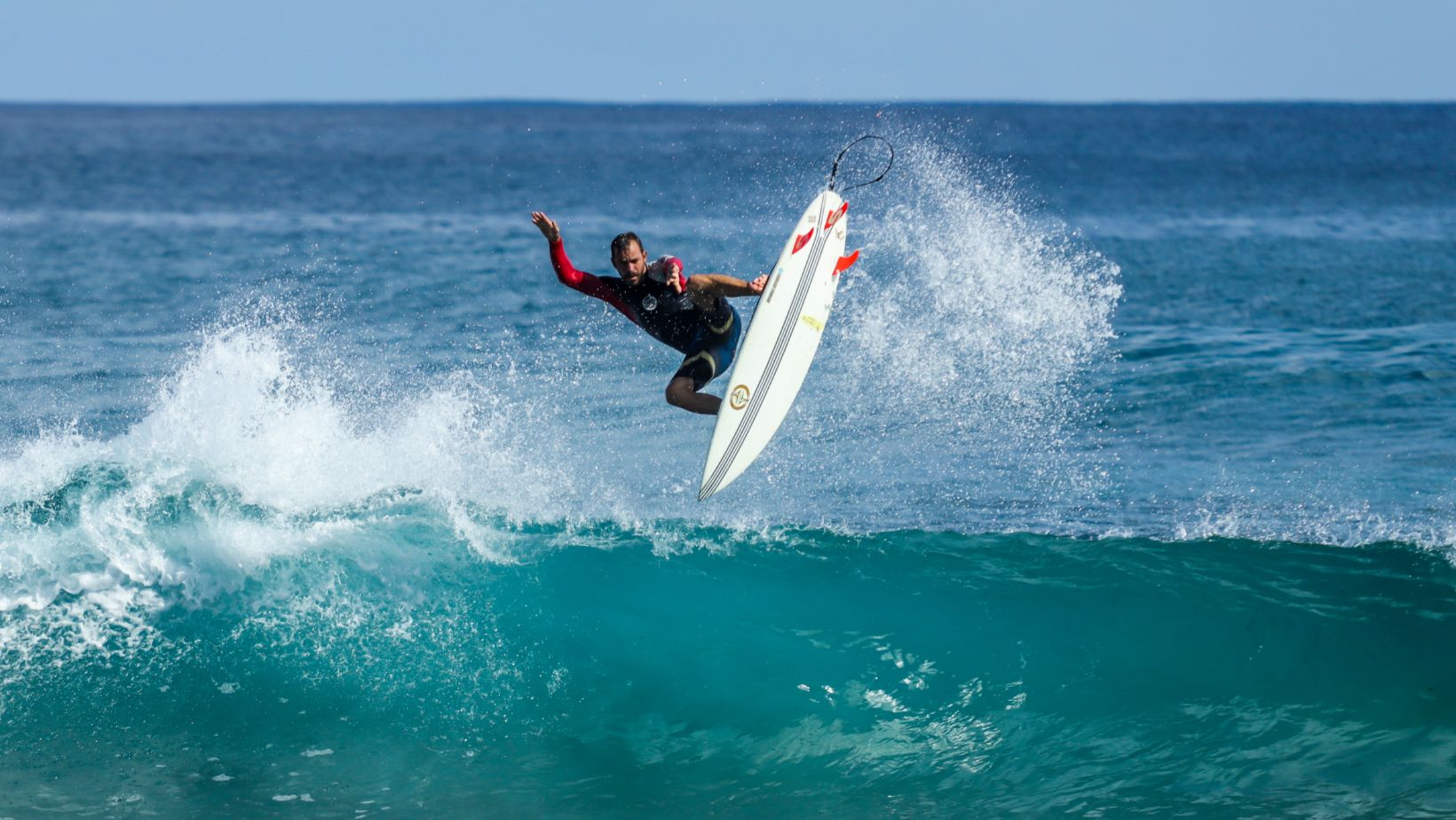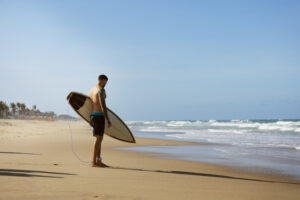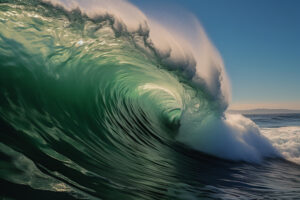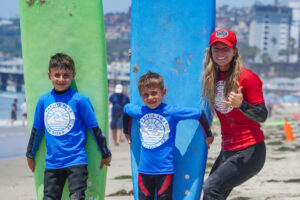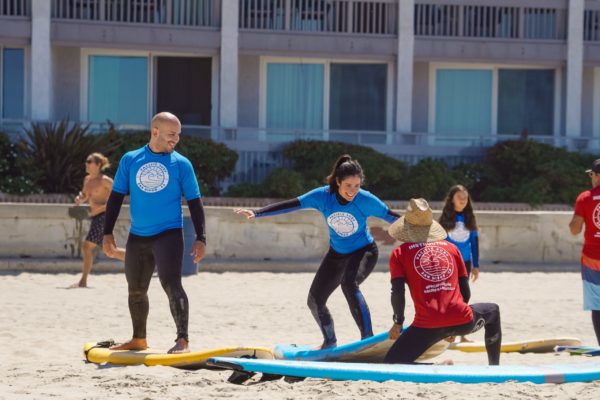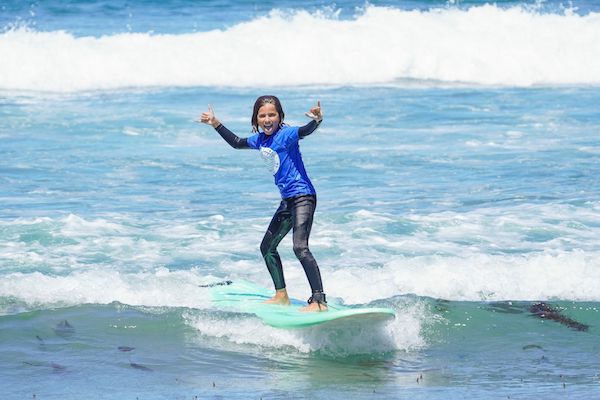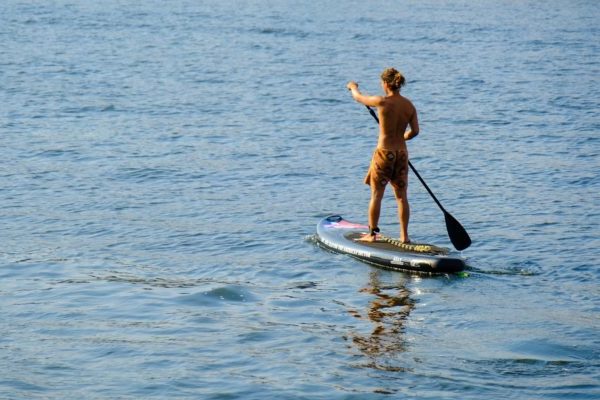Learning how to surf is not only about the thrill of being on the water but also about embracing a whole new lifestyle. For many, surfing is a way to escape the daily grind and connect with nature, while for others, it’s a way to keep fit and active. Whatever your motivation, catching your first wave is an experience you’ll never forget. In this blog post, we’ll provide you with valuable tips and advice to help you catch your first wave and experience the magic of surfing. So, let’s dive right in!
The first step to catching your first wave is choosing the right surfboard. As a beginner, you’ll want to use a larger board with more volume, as this will provide better stability and make it easier to paddle and catch waves. A popular choice for beginners is a longboard or a soft-top foam board, which offers increased buoyancy and a more forgiving surface for inevitable wipeouts.
When selecting a surfboard, consider factors such as your height, weight, and ability level. It’s best to consult with an experienced surfer or a surf shop employee to find the perfect board for you.
Before jumping into the ocean, it’s essential to understand basic surf etiquette and safety rules. These guidelines help to maintain order in the water and minimize the risk of accidents. Some key points to remember include:
- Right of way: The surfer who is closest to the peak of the wave or furthest out has the right of way. This means they have priority to catch the wave, and other surfers should yield to avoid collisions.
- Don’t drop in: “Dropping in” refers to catching a wave that another surfer is already riding. This is considered poor etiquette and can lead to dangerous situations.
- Paddle wide: When paddling back out into the lineup after catching a wave, try to avoid paddling through the breaking waves where other surfers may be riding. Instead, paddle around the break zone to minimize interference and maintain a safe distance from other surfers.
- Hold on to your board: Losing control of your surfboard can be hazardous to both you and others in the water. Always maintain control of your board and use a leash to ensure it doesn’t get away from you.
Learning How to Paddle and Pop Up
Before you can catch your first wave, you’ll need to master the art of paddling and popping up on your surfboard. Paddling involves lying on your stomach and using your arms to propel yourself through the water. It’s essential to develop a strong and efficient paddling technique, as this will help you catch more waves.
To pop up, start by lying flat on your board and positioning your hands near your chest. In a swift motion, push your upper body off the board while simultaneously swinging your legs under you, bringing your feet to a standing position. It may take some practice to perfect the pop-up, so spend time on the beach or in shallow water getting comfortable with the movement.
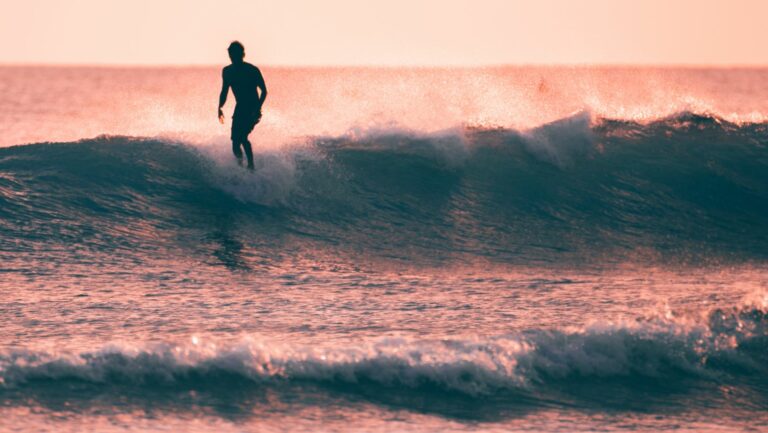
Choosing The Right Wave
Catching your first wave requires patience and the ability to assess which waves are suitable for beginners. Look for small, clean waves that have a gentle break and are consistent in size and shape. It’s crucial to avoid waves that are too steep, too fast, or breaking too close to the shore.
As you gain experience in the water, you’ll develop a better understanding of wave selection and how to position yourself to catch the best waves.
Positioning and Timing
Once you’ve chosen your wave, it’s important to position yourself correctly on your surfboard and time your paddling so that you catch the wave at the optimal moment. As the wave approaches, start paddling towards the shore and adjust your position on the board so that it’s perpendicular to the wave.
You’ll want to start paddling with enough speed to match the speed of the wave. As the wave catches up to you, give a few strong paddle strokes and then prepare to pop up. Timing is critical, and with practice, you’ll be able to catch waves with greater success.
Tips for Catching Your First Wave
Here are some additional tips to help you catch your first wave:
- Practice your pop-up on land: Before hitting the water, spend time practicing your pop-up on the sand or on a soft surface. This will help build muscle memory and make it easier to perform the movement in the water.
- Be patient: Finding the right wave and timing your paddle can be challenging at first. It’s essential to remain patient and keep trying, as practice makes perfect.
- Stay committed: Commitment is key when attempting to catch a wave. If you hesitate or don’t paddle hard enough, you’re less likely to catch the wave. Be confident in your abilities and commit to each wave you attempt to catch.
Learning how to catch your first wave may seem daunting, but with perseverance and practice, you’ll soon be riding the waves like a pro. Remember to start with a suitable surfboard, learn the basics of surf etiquette and safety, and take the time to perfect your paddling and pop-up technique. As you gain confidence in the water, you’ll find that catching waves becomes easier and more enjoyable. So, grab your board, hit the beach, and get ready to experience the exhilarating world of surfing. The ocean awaits!

